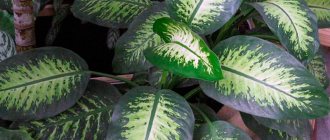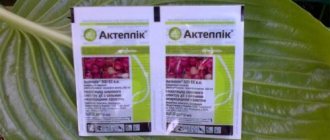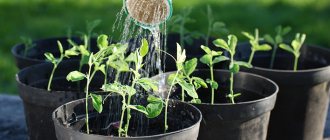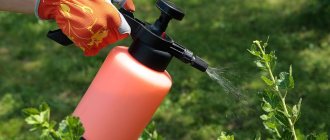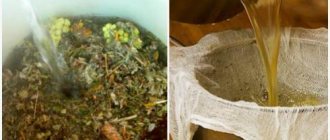Maintaining hygiene for indoor plants is one of the main conditions for their health and attractive appearance. Dust and dirt not only spoil the pleasure of contemplating green pets, but also disrupt metabolic processes and create an ideal environment for the spread of pests. You need to clean plants from dust not from time to time, but regularly. If we are talking about decorative deciduous crops, then this task is not at all easy. After all, even in the matter of plant hygiene, an individual approach to them is needed.
Cleaning the leaves of indoor plants from dust and dirt. © Westend61
Decorative foliage plants are indispensable both for interior decoration and for creating a healthy living environment. Being excellent filters that cope with toxins, harmful substances and allergens, they improve the health of the air and help create a comfortable living environment. But in order for plants to fully perform their function as a living filter, they must be in a clean state. After all, plant leaves attract dust, soot and dirt, which clog the stomata and prevent their normal respiration. Hygiene is important both for the process of photosynthesis - the main life process of plants - and for preventing the spread of pests or diseases. So the issue of maintaining cleanliness is by no means just an aesthetic one. But especially in decorative deciduous crops, maintaining hygiene is far from easy.
Attractive leaves usually mean they have a leaf edge or a special structure or surface texture. Only a few decorative foliage stars have glossy leaves. And living velvet or velor, felt or satin on them automatically means that the leaves of these plants do not like contact. Along with the inability to increase air humidity by spraying, these plants do not tolerate inaccurate watering, drops of water falling on the leaves, not to mention watering. The ban also applies to cleaning such leaves: where on smooth leathery leaves you can get by with a very simple procedure of wiping with a damp sponge, on pubescent plants you will have to use other methods.
First of all, when studying the individual characteristics of a plant, it is worth checking whether it tolerates contact with the surface of leaves, spraying and showering, and whether there are recommended methods for maintaining hygiene. If there is no such information, you should rely on the instructions for spraying: crops for which they are prohibited do not like wiping or washing the leaves.
General rules for cleaning indoor plants:
- Dust removal must be carried out regularly. Dust accumulates on leaves even in rooms where special collection devices are installed. Depending on the intensity with which dust is collected, a mandatory cleaning procedure must be established and carried out regularly. It is best to observe the plant, but the standard frequency of hygiene procedures is once a week or a little less often.
- Rubbing is necessary not only on the outer, “top” side of the leaves, but also on the back side. Despite the fact that dust and dirt are usually visible on one side of the sheet, thorough cleaning must be carried out on both sides.
- In addition to regular procedures, schedule periodic “spring cleaning” into your schedule—showering or washing for plants that can handle it, and a similar thorough cleaning for crops that can’t stand getting wet. They are combined with cleaning the top of the substrate from contaminants and cleaning the trays and outer parts of the containers in which green pets grow. Such procedures are also carried out urgently if it is noticeable that the plant is heavily contaminated, so much dust accumulates that the functioning of the respiratory stomata is disrupted and growth retardation is observed.
- Do not wait until a thick layer of dust and dirt appears on the leaves. As soon as you see that dust becomes noticeable on the leaves, not only from a very close distance, take action immediately. The less the plant is contaminated, the better.
- With any type of wet cleaning on plants, they need to be protected not only from direct sunlight, but also from cold environments, air currents, and drafts. Drying of the leaves is carried out in a warm place with diffused semi-shaded lighting.
Spraying the leaves of indoor plants. © bluecinema
Sources of pollution can be:
- construction and paint materials, furniture;
- disruption of the ventilation system;
- air fresheners, detergents;
- tobacco smoke;
- volatile organic compounds (benzene, formaldehyde, toluene);
- flame retardants;
- fumes from cooking;
- dust, dust mites.
In the short term, indoor air pollution causes a person to experience symptoms similar to those of a cold: nasal congestion, headaches, dizziness, a suffocating cough, watery eyes, a sore throat, and asthma may develop (or worsen).
In the future, if the impact of negative factors is prolonged, they can result in a number of serious (and often fatal) ailments:
- bronchitis, asthma or emphysema;
- stroke, heart attack;
- lung tissue begins to age rapidly, and cancer is likely to develop;
- cognitive functions decrease;
- life expectancy decreases.
Indoor plants not only decorate a room and improve your mood, they can purify the air.
This has an extremely beneficial effect on human health: blood pressure normalizes, attentiveness, concentration and productivity increase, and anxiety decreases.
To improve air quality, you can place the following indoor plants in your home and office:
How to wash the leaves of indoor flowers from dust to make them shine?
The procedure is mandatory: we wash away dust and stains from watering or spraying from the leaves of indoor plants.
By removing contaminants, including mineral salts, we will ensure normal air exchange for the flower. As people say, “let’s breathe.” The benefits are colossal: the health of plants improves, they grow and develop faster. Water will wash away pathogenic microorganisms and pest larvae if they have not yet caused significant damage.
In the end, they just look neat and become a decoration for the interior of the house. A flower with clean leaves is more spectacular than a flower that you forgot to wash. I tell you about the procedure and little secrets in detail.
Rules for cleaning plants
Contamination is best seen on large sheets of rich green color. But this does not mean that the rest do not need to be washed!
The frequency of the procedure depends on the location of the flower and your place of residence. A plant placed on a windowsill near a window that is often opened will become dirty faster than one placed in the back of the room. The type of settlement also plays a role: in the city, green pets need to be washed more often.
Watch the plant! Traces of dust and water stains have appeared - why wait for a better opportunity? We have a free minute - let's take care of the rastuski! Moreover, it won’t take much time.
How to clean plants with “fluffy” leaves?
Can violets be washed?
A special word needs to be said about indoor plants whose leaves are covered with villi. These are geraniums, all gesneriaceae (gloxinias, violets, achimenes) and some others. Such flowers cannot be washed regularly - the leaves dry out very poorly (drops are retained by the pubescence), which can cause problems. For example, sunburn or rotting.
At the same time, dust also settles on them, which must be dealt with. From my own experience I will say: maintaining a violet in a decorative form is quite a task! You can remove dust with a soft brush, tilting the plant and brushing away dirt from the center.
But once every 2-3 months you can have a “shower”. But be sure to ensure that the flower dries in a warm and shaded place. Without cold drafts, of course.
Cleaning flowers with large leaves
Detergents cannot be used
It is easiest to wash plants with large leaves: rubber ficus, monstera, dieffenbachia and others. All you need is a soft, damp cloth or sponge.
There are no special requirements for water: the main thing is that it is at room temperature. I recommend using filtered water to avoid getting new stains due to mineral salts and other impurities that tap water is rich in.
But what about those whose leaves are very small?
Be sure to let the water drain afterwards
A great option is to arrange a floral shower. Hold the plants under thin, diffuse streams, preferably covering the soil with film. We are talking about a hot shower that stimulates growth. For cleaning, you can use water at room temperature. A great option is to combine business with pleasure.
“Secret Ingredient” – Natural Polish
Spathiphyllum leaves are very beautiful! Even without flowers
And now - a little advice from personal practice that allows you to make flowers even more beautiful. I actively use it on spathiphyllum and dieffenbachia. After washing, rub the leaves with milk or beer for a gorgeous shine!
Follow the most important and interesting things in the Tatmedia Telegram channel
Edge and living velvet on the leaves
Plants with beautiful leaf textures are afraid of even the slightest drops of water. And wiping, let alone washing, is unacceptable for them. The purity of the greenery of such decorative deciduous and flowering crops is maintained by completely different means.
The main method of removing dirt from pubescent leaves is careful manual cleaning using a piece of soft velvet, a soft brush or special brushes with delicate natural bristles.
In emergency situations, for example, when plants have suffered from irregular care in the kitchen, their leaves are covered with a greasy coating, they were indoors during repairs, even on pubescent leaves it is necessary to wash them. True, we are not talking about showering: with the help of soap suds and gentle washing, dirt is removed, and then the plants are allowed to dry thoroughly, protecting them from bright light and low temperatures. Such washing is always a very serious stress and rarely ends with the return of the decorative properties of old leaves to their original ones. Before washing pubescent leaves, you should always carry out the usual dry cleaning of dust and dirt, and only then carefully wash them.
Cleaning the leaves of indoor plants from dust and dirt and adding shine
How to properly clean the leaves of indoor plants from dust?
Do you clean the leaves of your indoor plants from dust? This must be done, as dust interferes with their healthy growth.
Cleaning the house is, of course, not an easy task. You need to put things in order everywhere, get to the farthest corners and... don’t forget about house plants! Do you know how to properly clean the leaves of indoor plants from dust ? Today we will tell you about this: and you will have at home the beautiful, blooming and fragrant garden that you have always dreamed of!
Why is it so important to clean the leaves of indoor plants from dust?
Dust on the leaves... well, what's wrong with that, some will say! Is it really that important?
Yes, and it must be removed , as it does not allow the plants to breathe normally. Therefore, dust interferes with their normal growth. In addition, dust and other environmental pollutants that accumulate on the surface of the leaves reduce the amount of sunlight. And, as you know, it is also necessary for plants.
As a result, the amount of chlorophyll will decrease and the plants will “get sick.” First they will stop growing, their leaves will turn yellow, and then they will simply die.
This is why it is so important to clean the leaves of indoor plants from dust, because they are deprived of rainwater. And it is recommended to carry out this procedure at least 2 times a month.
How to properly clean the leaves of indoor plants?
Water is the first remedy
It doesn't take an expert to suggest that water is the best way to clean houseplant leaves. This is truly an indisputable fact!
Believe me, they will love this shower. Just place them in the bathroom or stall and turn on the water. Just make sure the water is warm. And, of course, it should be a shower, and not a stream from a tap, which can damage the leaves.
You can also use a spray bottle.
If the plants are very dusty and dirt literally sticks to their leaves, you can add a small amount of shower gel to the water. Spray this mixture on the leaves and then rinse with clean water. The only thing in this case is that it is recommended to either cover the soil or tilt the plant so that the soap solution does not get into the ground.
Natural polish
This is a very effective technique for cleaning plants with smooth leaves (those with hair or bumps should not be used). You just need to wipe the leaves of indoor plants with a sponge dipped in soapy water.
Another option is to use olive oil. In both cases, you will be satisfied with the result: the leaves will be clean and shiny.
We clean the plants with beer or milk!
As incredible as it may sound, milk actually serves this purpose. The procedure itself is very simple: soak a cloth in milk and wipe it on the leaves from which you want to remove dirt. The result will be instant!
In the same way, to easily clean the leaves of indoor plants from dust, you can use beer.
Banana peel
If you wipe the leaves of indoor plants with the back (white) side of a banana peel, they will literally sparkle clean! Just like with milk, you will notice results immediately. The leaves will become greener, fresher and juicier.
Have you tried it with a toothbrush?
So, we seem to have sorted out the smooth foliage, but what to do with the velvety and curly leaves? You can use your old toothbrush to clean them!
Everything is extremely simple: place the leaf on your hand and brush over it, moving from base to tip . Don't forget to wet the brush from time to time. And before cleaning the plants, let it dry.
An ordinary soft brush (for clothes, for example), a shaving brush, or any of the fallen leaves of the same plant will also be suitable for these purposes.
Other tips
Since we are talking about how to properly care for indoor plants, other aspects should be mentioned. It is very important, for example, to remove “diseased” parts (tear off leaves, cut off stems).
If your plant has wilted flowers or yellowed leaves, it is better to remove them in a timely manner. Then the plant will be able to direct all its forces to the preservation and development of healthy shoots.
In addition, the characteristics of each plant should be taken into account. After all, they require different care. There are some that “don’t like” being wet: for example, cacti and succulents. They need dry cleaning.
Cleaning the leaves of houseplants is actually not that difficult. It takes only a few minutes. But the plants will feel good and pleasant. And if you have flowers at home, let them be a real interior decoration! Healthy and juicy greens will please the eye and will definitely lift your spirits!
Spiny pets
Cacti and other indoor plants with thorns or thorns, including heavily pubescent decorative deciduous begonias, are cleaned of accumulated dust not by ordinary wiping, but with the help of brushes and brushes.
For cacti, you can use stiffer brushes (for example, toothbrushes) during the cleaning process, but it is always better to use a brush with elastic, thick bristles, which allows you to work without the slightest injury even for very fine bristles on both hardy and much more delicate plants.
Use a cloth or full shower
About dry and wet cleaning
There are plants that do not tolerate wet cleaning well:
- violets and other flowers with velvety leaves that retain water;
- succulents with thick leaves. They accumulate moisture, and as soon as there is an excess of it, the leaves immediately fall off.
For dry and wet cleaning, use a cloth or foam sponge. Fleecy leaves are cleaned with a soft toothbrush, shaving brush or paint brush. During the procedure, movements go from the stem to the edge of the leaf.
When wet cleaning, the leaves can be wiped with a cotton pad soaked in milk or beer. The result is wonderful: the dust does not curl up, and the greenery becomes bright and shiny.
In order for the shower to bring more benefits to green “pets”, you need to follow the following tips:
- The flowers should be watered the day before so that excess moisture does not linger in the pot.
- The soil must be tightly covered with film.
- Adjust the jet (pressure, temperature).
- Tilt the flower pot and place the crown under the stream for half a minute.
- Let the water drain.
- Flowers should dry in a room where it is warm and free of drafts.
Hot shower
A hot shower has a temperature of 40-60 degrees. Recommended for flowers with lush foliage. We spill hot water on the leaves, trunks and soil in the pots. The result is visible after two hours. After this, the flowers are transformed, becoming vigorous and bright.
The benefits of such a shower are obvious:
- cleanses of impurities;
- causes the growth of new shoots;
- leaves receive moisture;
- hot water - prevention against pests and pathogenic microflora of plants;
- the root system is strengthened.
Another way
A way to wash a flower that has many small leaves:
- fill the bucket with warm water;
- add a few drops of dishwashing detergent;
- holding the ground, turn the pot over;
- put the leaves in a bucket;
- rinse;
- dry.
It is good to bathe the plant in melt or rain water, if possible.
Do I need to use soap?
You need to use soap when the leaves are very dirty. For example, after repairs, if the flowers were not covered. Soap is used in the fight against fungal diseases, such as gray rot. Mealybugs, spider mites, and aphids infect domestic flowers.
If pests are detected, the plants are treated with a soap solution. It is necessary to moisten a napkin in soapy water and wipe the leaves. If the plant is small, you can dip the foliage in a container with soapy water. This is how not only affected plants are treated, but also all others for prevention.
Spathiphyllum
This beautifully flowering plant with large decorative leaves prefers diffused sunlight and high air humidity. Spathiphyllum is quite shade-tolerant and drought-resistant; under favorable conditions, it blooms throughout the year. The plant should be protected from drafts and temperature drops to 12°C or less. Spathiphyllum is also called “women’s happiness.” It is believed that having positive energy, this flower promotes harmony and mutual understanding between family members.
Sources of pollution can be:
- construction and paint materials, furniture;
- disruption of the ventilation system;
- air fresheners, detergents;
- tobacco smoke;
- volatile organic compounds (benzene, formaldehyde, toluene);
- flame retardants;
- fumes from cooking;
- dust, dust mites.
In the short term, indoor air pollution causes a person to experience symptoms similar to those of a cold: nasal congestion, headaches, dizziness, a suffocating cough, watery eyes, a sore throat, and asthma may develop (or worsen).
In the future, if the impact of negative factors is prolonged, they can result in a number of serious (and often fatal) ailments:
- bronchitis, asthma or emphysema;
- stroke, heart attack;
- lung tissue begins to age rapidly, and cancer is likely to develop;
- cognitive functions decrease;
- life expectancy decreases.
Indoor plants not only decorate a room and improve your mood, they can purify the air.
This has an extremely beneficial effect on human health: blood pressure normalizes, attentiveness, concentration and productivity increase, and anxiety decreases.
To improve air quality, you can place the following indoor plants in your home and office:
